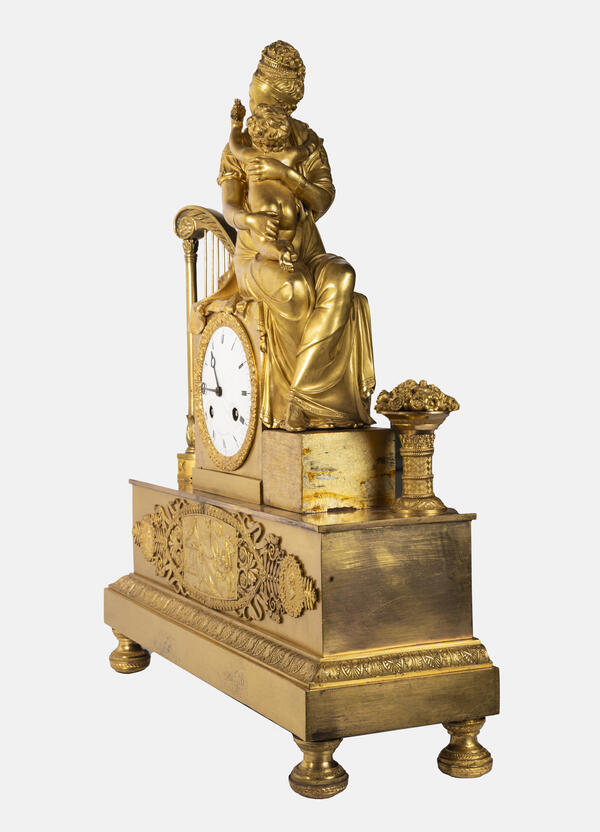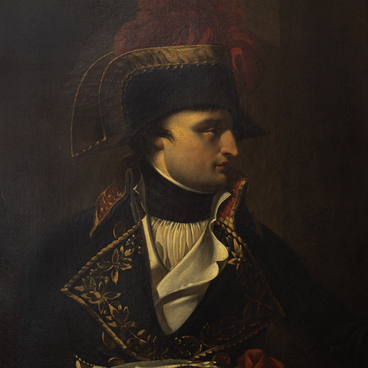The fireplace clock entered the Borodino Museum-Reserve after the Great Patriotic War. It was handed over by a museum in Uglich. It came to be stored there from the estate of the descendants of Mikhail Illarionovich Kutuzov, which was located in that area. According to a family legend, the clock originally decorated the family home in St. Petersburg.
Apparently, this artifact was made after the events of the War of 1812 and after the death of the great commander, which followed soon. The master’s brand has been preserved on the dial: “Rieussec a Paris” — “Rieussec in Paris”. Hence, the mechanism for this item was produced by the prominent French clockmaker Nicolas Mathieu Rieussec.
He received his clockmaker’s license only in 1817, a few years after the end of the Napoleonic Wars. The decorative elements of the clock made in gilded bronze help identify the time of creation.
On the front part of the pedestal, the designer of this sculptural composition placed a relief image of a woman with a child in her arms near a cradle. On the sides of the bas-relief are female and male profiles bordered with flower wreaths. They depict Napoleon Bonaparte and his second wife, the Austrian archduchess Marie-Louise.
Probably, the master dedicated the bas-relief to Bonaparte’s wife, as well as to their son and heir Napoleon II, who was not destined to ascend to his father’s throne. The plot is repeated in the sculpture at the top of the clock. The cube with the clock mechanism features an image of a woman in an Empire-era dress with a baby in her arms. To the left of the sculpture is a harp. It was a fashionable instrument in the 19th century, which often acted as a detail in ceremonial portraits. On the right is a flowerpot with flowers.
The clock with the image of Emperor Napoleon and his family could have been made in the 1830s and 1840s, when the official cult of Bonaparte revived again during the July Monarchy period, and his mortal remains were returned to France.
This was also the heyday of Rieussec’s work, when he became one of the leading clockmakers in France. Although the artifact did not originate from the War of 1812 era, it reflects the further evolution of the Napoleonic legend in France.





